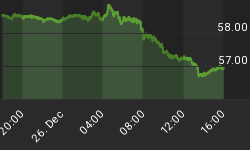
Our Magnificent Seven of Grains are perhaps not as exciting as those in the Seven Samurai or the cinematic classic The Magnificent Seven(Yul Brynner, 1960), but they are also essential to the survival of the world "village." Without the Magnificent Seven of Grains hunger would be far more widespread in the wold.These seven nations provide 78% of the global course grain and wheat exports. They provide 13% of total world consumption of these grains.
Essentially, course grains and wheat are total grains minus corn and rice.
We use this measure as most rice, 93%, is not exported but consumed domestically, or where produced. Corn is primarily grown to feed animals, and is not fed directly to humans.
The role, or importance, of each of our Magnificent Seven of Grains is portrayed in the graph below. Those nations include the United States, Argentina, Australia, Russia, Brazil, Ukraine, and Canada. Together 78% of global exports of these grains come from just seven nations. We also note that the Americas provide half of the world's exports of these grains. Australia exports nearly 80% of its wheat production.

The reason some nations are exporting grains is that some nations must import grains to feed their people. Six nations and regions, in toal, must import more than half of their annual wheat requirements. Those include Brazil, Japan, Mexico, Middle East, North Africa, and Southeast Asia. The latter must import nearly all of its wheat needs as does Saudi Arabia.
An obvious question comes to mind. How do those grains move from exporting nations to importing nations? In the world of Agri-Food a special set of companies referred to Agri-Collectors fill that role. They are the "operating system" for the global Agri-Food system. Without them serving their role those nations and regions that must import grains might not be able to do so. Four companies, two public and two private, are the most important components of the global Agri-Food collection and distribution system. Collectively they are referred to as the "ABCD" of global Agri-Food.
Last we visited our recommendation was to follow the money. Our Magnificent Seven of Grains have already been the recipients of considerable money flows, and most certainly will be the destination for large money flows in the future. For example, these nations exported more than a 100 million tons of wheat in the last crop year. While estimating the value of the average ton of wheat is near impossible, let us guess that the value of those wheat exports are more than $30 billion per year.
In total, the UN Food & Agriculture Organization estimates the world's food import bill this year at about $1,094 trillion. That money will flow from importing nations to those exporting into the global Agri-Food system. The recipients of that money include all the farmers, vendors, and others that provide the goods and services necessary to grow the Agri-Grains necessary to feed the world. That is a lot of money to follow. And the best part? The world has no choice but to pay that bill each and every year!
AgriMoney: Wealth Creation Through Agri-Food Investments has been well received by investors. This book opens the world of Agri-Investing to investors that want to be ahead of the Street. AgriMoney is now the primary educational resource for Agri-Investors, new or experienced. See our web site.
Ned W. Schmidt,CFA is publisher of The Agri-Food Value View, a monthly exploration of the Agri-Food grand cycle being created by China, India, and Agri-Energy. To contract Ned or to learn more, use this link: www.agrifoodvalueview.com
















